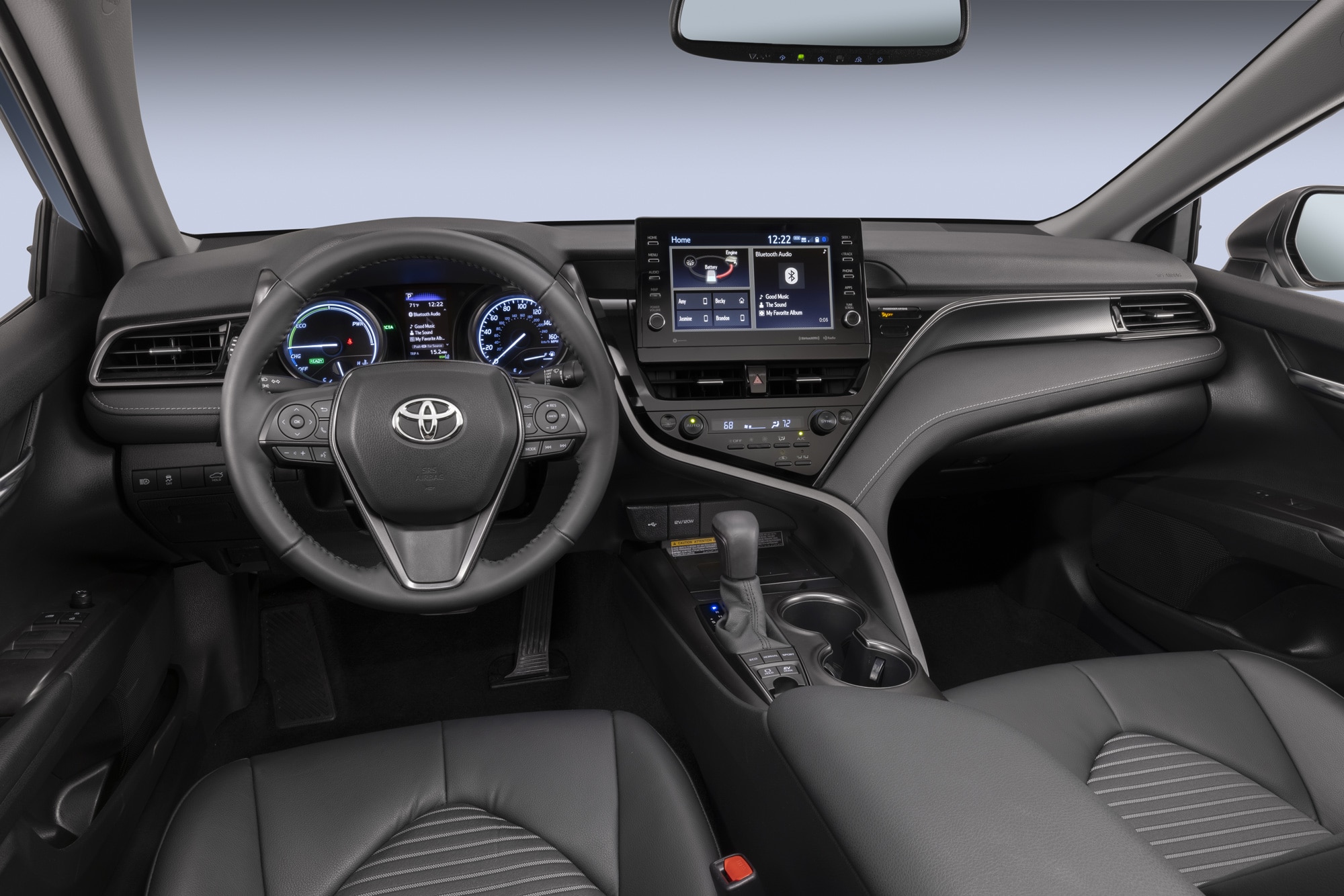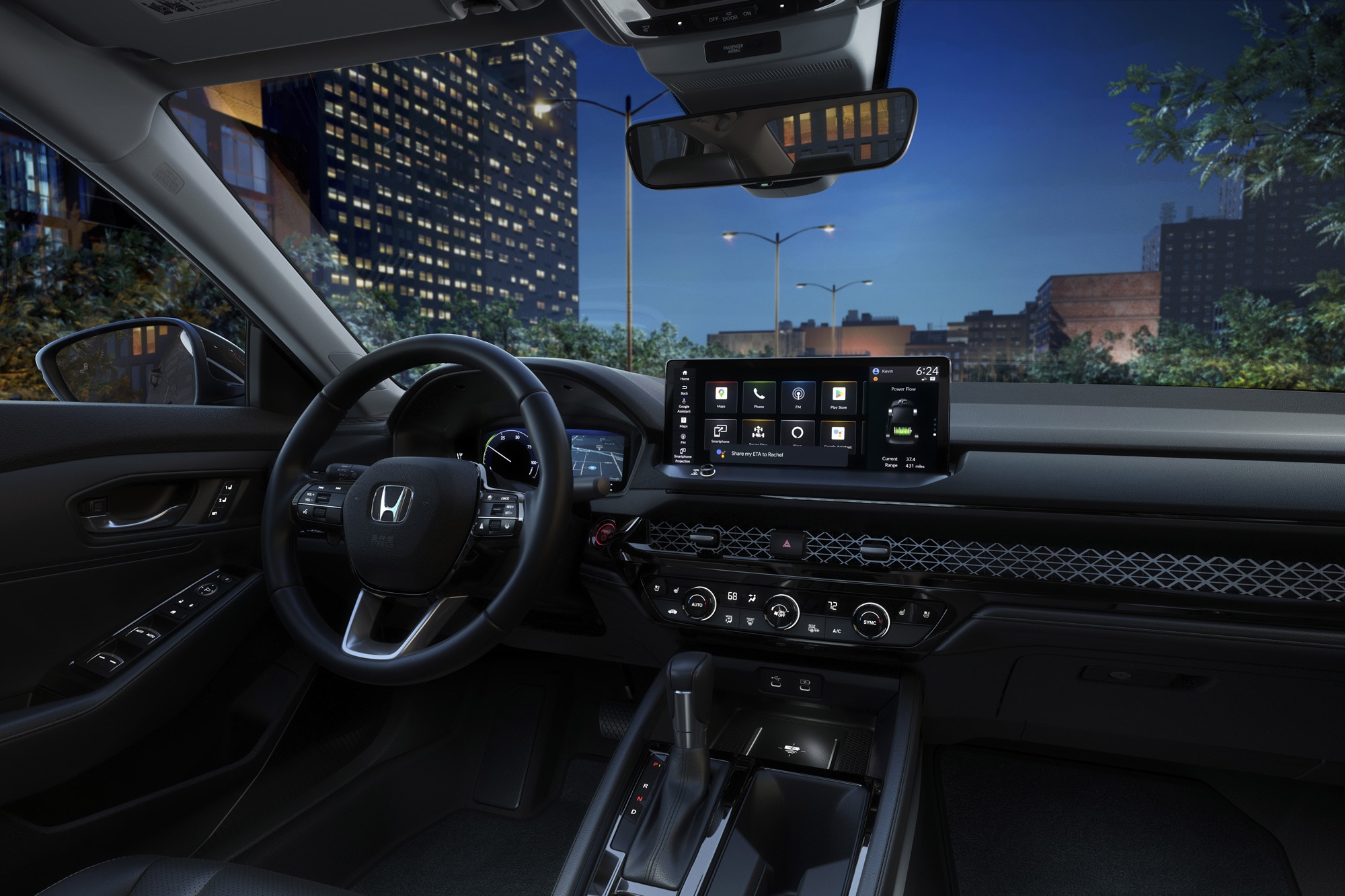Compared: 2023 Honda Accord vs. 2023 Toyota Camry
These two midsize sedans have benchmarked each other since the 1980s.
 Honda | Toyota
Honda | Toyota
QuickTakes:
Honda Accord and Toyota Camry have been battling each other in the sales race for more than 40 years. In 2023, Toyota sold almost 93,000 more Camrys in the United States than Honda sold Accords. Going off those numbers alone, the Camry is more popular. But when it comes to price, features, and fuel efficiency, it's worth a closer look at how these two midsize sedans stack up in terms of how they could fit in with your life.
 Toyota
Toyota
The Toyota Camry Is Relatively Affordable and Adequately Powerful
The Accord, as with other Hondas, lures buyers with pleasing driving dynamics, attractive styling, an upscale interior, and efficient powertrains — but not necessarily its price. That isn't to say the Accord's cost is unreasonable; it's merely on the high side for this class. The base model, powered by a turbocharged 1.5-liter four-cylinder making 192 horsepower, opens at about $29,000. If you want the 204-hp hybrid, you'll need at least $33,000.
With Toyota, it's a different story. Affordability is a big part of the Camry's charm. Its cheapest trim, the LE, comes in at about $28,000 and delivers more power. Plus, buyers can pair its 203-hp 2.5-liter four-cylinder with all-wheel drive (AWD) — something the Accord doesn't offer. The Camry's AWD costs more than $1,000 and is available only with the base four-cylinder.
Toyota offers a 208-hp hybrid as low as about $30,000 and a 301-hp 3.5-liter V6 for around $35,000. The latter can be found in a couple of fancy trim levels as well as a performance-oriented model called the TRD — Toyota Racing Development — which distinguishes itself from other Camrys with improved brakes, stronger underbody braces, some aero bits, and a track-tuned suspension.
 Honda
Honda
Accord and Camry Go Head to Head in Features
Base to base, the two vehicles have similar feature sets, though the details vary. For instance, both boast 7.0-inch touchscreens with wired smartphone-mirroring capability, but while Toyota offers a larger 9.0-inch screen on the base Camry, Honda reserves its big 12.3-inch display for the hybrids. Those Accords also come with wireless Android Auto and Apple CarPlay — something no Camry offers.
Moreover, Honda installs a fully digital 10.2-inch instrument cluster in every Accord, whereas Camry drivers will gaze down to find either a 4.2- or 7.0-inch screen flanked by analog gauges. Both sedans feature automatic climate control, but you'll need to select a better-than-base Accord if you want to set different temps for the driver and front passenger.
Honda and Toyota provide decent driver-assistance suites, complete with automatic high-beams, forward-collision mitigation, lane-departure correction, and adaptive cruise control, though while every Accord offers the last with stop-and-go functionality, the same can't be said for certain Camrys. Then again, shoppers can't get blind-spot monitoring on the cheapest Accord, but they can pay extra for it on the entry Camry.
When it comes to amenities, Toyota has the edge, offering things such as a head-up display, leather upholstery, and ventilated front seats in more than just its top model. It also has a surround-view camera on the options list. That said, if you consider space to be a luxury, the Accord gains some ground, as it boasts the roomier cabin and cargo hold.
 Toyota
Toyota
The Camry Edges Out the Accord in Fuel Economy
The hybridized EX-L model is the most efficient Accord at 51/44/48 mpg city/highway/combined. The other hybrid trims — which wear larger wheels than the EX-L — perform a little worse, boasting 46/41/44 mpg ratings. Should you decide to purchase a model with the turbo 1.5-liter, you're looking at 29/37/32 mpg.
Those numbers aren't far off from the Camry's. Among the available hybrids, the most efficient base model returns 51/53/52 mpg, while the upper-trim hybrids are good for 44/47/46 mpg. Similar to the Accord, the difference likely comes down to wheel size. The Camry may offer the most efficient option among these two sedans, but it also features the least efficient possibility with the Camry TRD at 22/31/25 mpg.
All vehicle pricing includes MSRP plus destination charges (set at the time of publication), and will be rounded to the nearest thousand.



